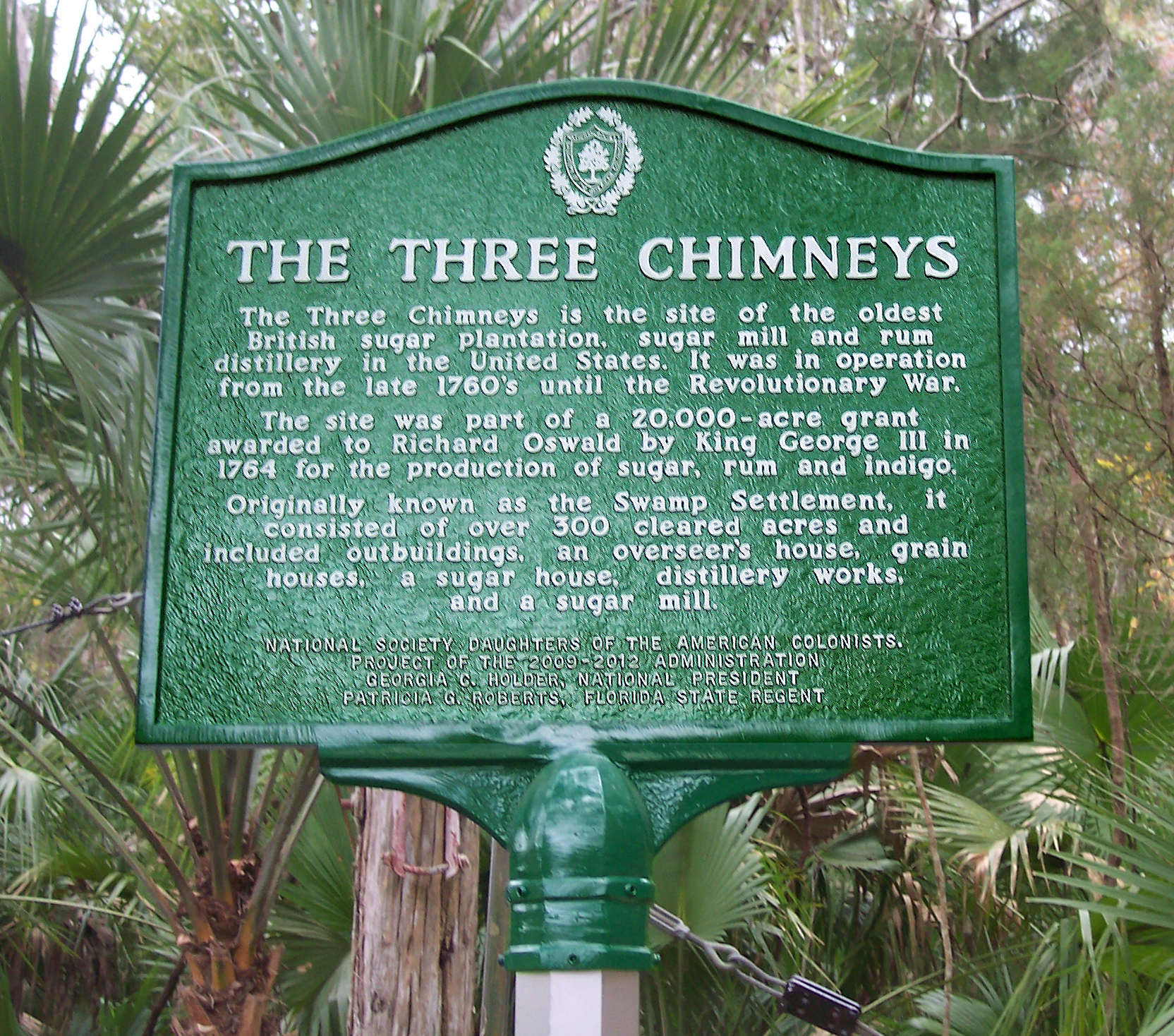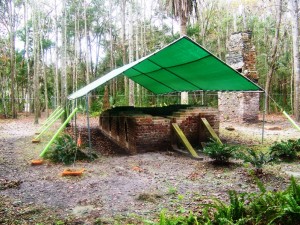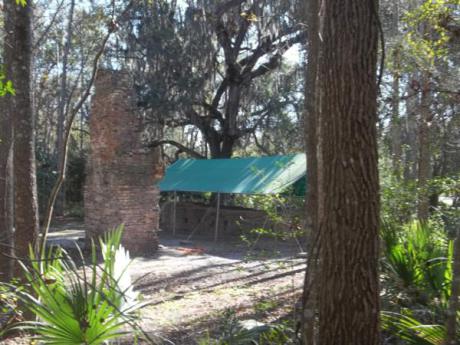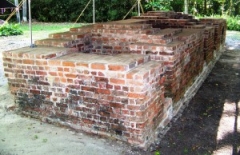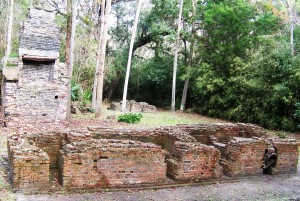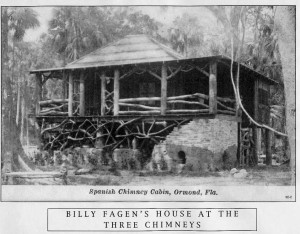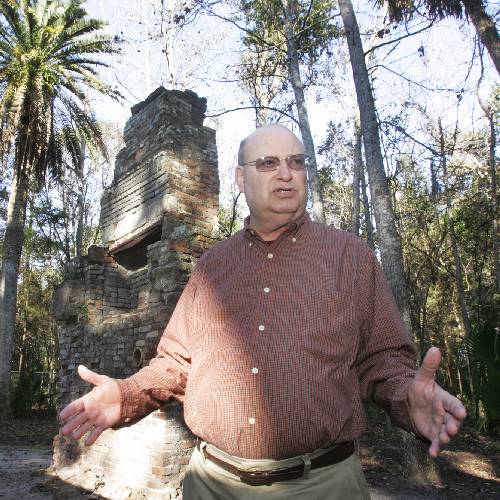12 FEBRUARY 2012 — THE THREE CHIMNEYS
ORMOND BEACH, FLORIDA
The Three Chimneys site, 715 West Granada Boulevard and just east of the Granada Professional Center, is the oldest successful British sugar plantation, sugar mill and rum distillery in the United States.
It was a part of the 20,000 acre grant awarded to a wealthy and influential Scotsman named Richard Oswald by King George III in 1764, under direction of the King’s Florida Governor, James Grant. The Three Chimneys was known as the Swamp Settlement in Oswald’s time.
Oswald made his fortune in the slave trade business he began in 1748 and by supplying large quantities of bread to English troops during the Seven Year’s War, which ended in 1763 with the cession of Florida by Spain to Great Britain.
In February 1765 Oswald shipped about 50 slaves, mostly men, to Governor Grant in St. Augustine, housing them temporarily along with supplies for establishing sugar, rum, and indigo production. In June 1765 several boats filled with tools, several Englishmen and Oswald’s African slaves landed at the point where the Tomoka and Halifax rivers merged, in an area now known as Tomoka State Park.
The first development, called Mt. Oswald, was soon underway. Oswald’s passion was to raise sugarcane but his efforts at the first plantation failed due to a major freeze; he initially had chosen a variety of sugarcane that was not tolerant of cold weather. They changed to cultivation of indigo and rice; indigo became their largest cash crop.
A few years later the development of the Swamp Settlement, about 6 miles to the south of Oswald Plantation, proved a success. The sugarcane fields there were flourishing and the first British sugar and rum were produced under the live oaks studding the grounds of the Three Chimneys. The Swamp Settlement consisted of 300 cleared acres and several substantial buildings, including the overseer’s house, grain houses, sugar house and distillery works, and sugar mill.
Richard Oswald lived in Virginia and knew the colonies well, but was an absentee landlord; he never visited Florida. He operated his plantations through overseers who supervised the slaves. Oswald’s plantations operated from 1768 until after the Revolutionary War. Oswald was in London during the war. After the revolution Richard Oswald was the British delegate to the peace negotiation. He worked with Benjamin Franklin, John Jay and others to draft the British terms of peace for the American colonies. The Treaty of Paris of 1783 established the Mississippi River as the western boundary for the United States.
At the end of the war Britain ceded Florida back to Spain. Oswald’s and other British plantations were completely abandoned by the English by late 1785. The Spanish granted land to several English in order to re-populate Florida rapidly. In 1803 Henry Yonge was awarded 850 acres including Three Chimneys, on the Mosquito (Halifax) River. He worked for 6 years to develop it but abandoned the area in 1809.
Three Chimneys area again became overgrown and wooden structures deteriorated rapidly. Spain ceded Florida to the United States in 1821; Florida became a state in 1845. After the Civil War early settlers to the area saw the 3 old brick chimneys. Generally these were ascribed as remains of early Spanish missions.
In 1914, Billy Fagan, friend and employee of Hotel Ormond builder John Anderson, constructed a house on the remains of the sugar boiling facility. He set up a tourist attraction known as Camp Fagan. It included a small museum and a couple alligators to entertain guests from the Hotel Ormond. It also included a tree stand where visitors could climb up and look east and view the Atlantic Ocean.
THIS IS HIDDEN TEXT
THIS IS HIDDEN TEXT
